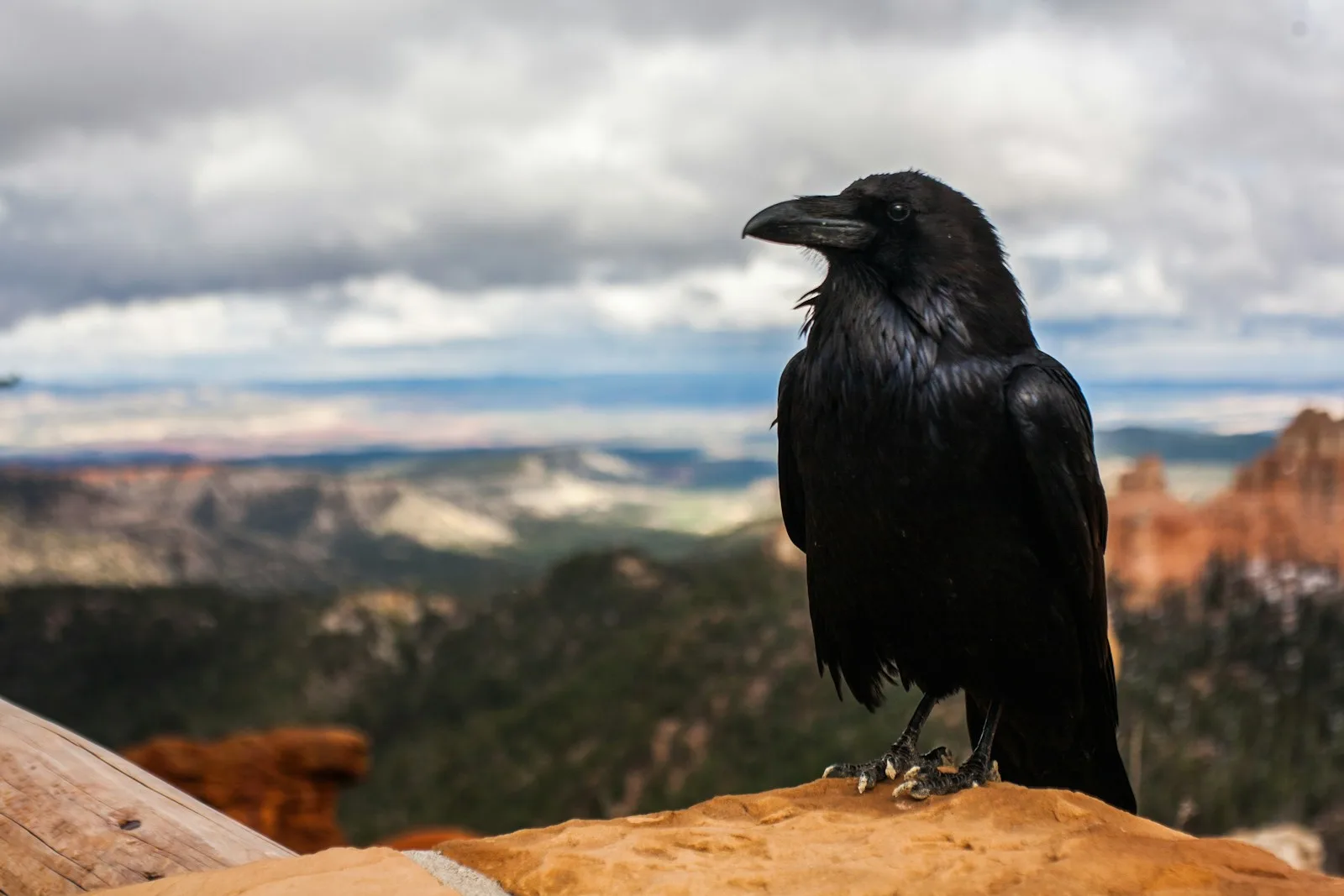Table of Contents
In the animal industry, Ravens and crows are the trendiest group names. Naturally, a group of crows commits a murder, and the gathering of crows is referred to as a “conspiracy”.
If you can’t tell the difference between these two large songbird species, in fact, you may believe you’re looking at a murder when you’re looking for a small plot.
Because they are both completely black and as terrifying as the night, it is easy to confuse crows with crows. However, certain characteristics help distinguish the two. Here are some tips to tell the American Crow (Corvus brachyrhynchos) from the Common Crow (Corvus corax).
Crows and ravens have distinct vocalizations.
That grate“Caw! caw! caw!” Halloween sound effects compilations, haunted houses and sounds from movie cemeteries? There is a crow. Whether they are alone, with friends or relatives, or with hundreds of other crows, they have a territorial call that can be heard crowing.
These clever birds make sounds in other ways too. Crows use a variety of cries to communicate different messages to their mates, including a cackle that sounds like a laugh. Crows in semi-captivity can also imitate human speech.
Crows have smoother, croaker vocals that are surprisingly human-like. They are able to “talk” to themselves, each other, or in response to a crow’s cry. Researchers have documented thirty-three vocalizations that crows commonly make. These vocalizations include comfort calls, predator alerts, and chase cries, which may include laughing, slamming, screeching, and other sounds. They can imitate other birds to imitate us.
Crows are much smaller than ravens.
If crows and crows do not communicate well enough with you, the difference in size between crows and crows can reveal their identity.
American crows are much smaller than crows. They measure the length of a baseball bat, weigh less than a pound, and measure 17 to 21 inches from beak to tail. Their wingspan is 34 to 39 inches. Compared to most backyard birds like sparrows, wrens or chickadees, crows look huge, yet their covid relatives dwarf them.
A common crow can reach the size of a call. With a wingspan of 46 inches, they are roughly the size of the longest professional golf club, and their body length can reach 21 to 27 inches. They weigh between 1.5 and over 4 pounds
Ravens’ bills have been described as “Roman.”

While it’s rare to get close enough to measure either bird using a yardstick, there are other physical indicators that can reveal which one they are. The crow’s bill is half covered in flat black bristles, smooth and with a small downward curve at its tip. Compared to the crow’s bill, which is much larger and often called “roman”, it is almost fragile. A crow’s bill is similar to the human “Roman” or aquiline nose, with a pronounced bridge and sloping profile. The word “aquiline” means “eagle-like” in Latin, referring to the animal’s hooked beak.
Ravens look a little more unkempt.
Crows have glossy feathers on their necks and around their bills that puff up when they crow. A crow’s head is surrounded by neat, silky feathers.
Ravens and crows have different tail shapes.

The silhouettes of the tail feathers of birds change as they fly. A crow’s tail feathers are uniformly long and fan-shaped. When a crow is in flight, its tail feathers take on a wedge or diamond shape because they are longer in the middle.
American crows have a smaller range than ravens.
Crows are found in large numbers in the Northern Hemisphere. They are found throughout Eurasia, from northern Africa and the southern Himalayas, to northern Scandinavia and Russia. They also live along the southern border of Greenland, as well as throughout Canada, Alaska, and the western United States, including Central America.
American crows only roam North America; They are truly less worldly in their travels. They can be seen year-round in the Canadian Maritimes, Alaska, British Columbia, and the United States. Because they migrate short distances, crows spend the mating season in Canada, extending as far north as the Northwest Territories.
Crow and raven habitats can be pretty similar.
Crows are incredibly adaptable to many settings and can live almost anywhere. They can be found in cities, rocks, mountains, deserts, scrub, grasslands, grasslands, and broadleaf and coniferous forests. Although crows live away from large cities, they will happily nest on man-made structures such as radio towers, utility poles, and oil rigs in sparsely populated regions.
Apart from large cities, crows live in forests, scrublands, prairies, and agricultural areas. Crows appear to be more adapted to heavily urbanized metropolises than crows. Thousands of crows can be seen wintering in places like Portland, Oregon; Rockville, Maryland; and Poughkeepsie, New York.
READ | Tree: Invite adorable crows with this low-maintenance ornamental tree!


1 thought on “Ravens vs Crows: 7 best Ways to Tell Corvid Cousins”